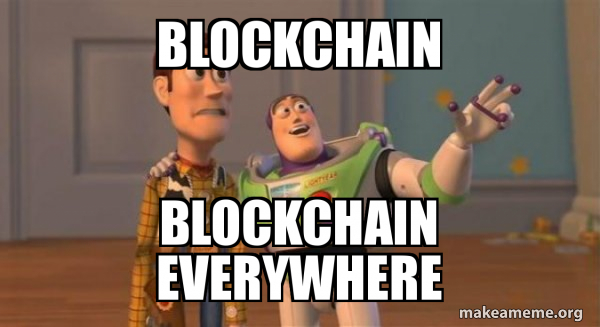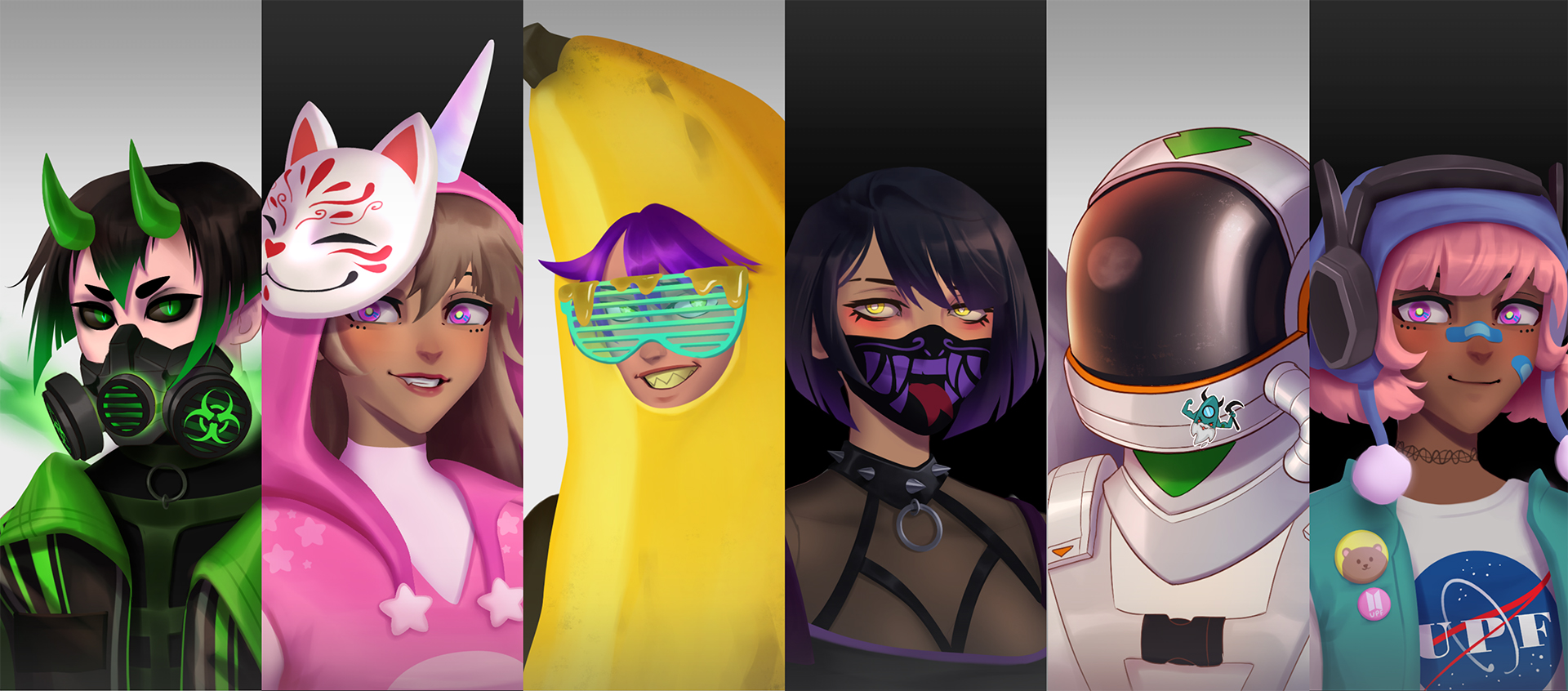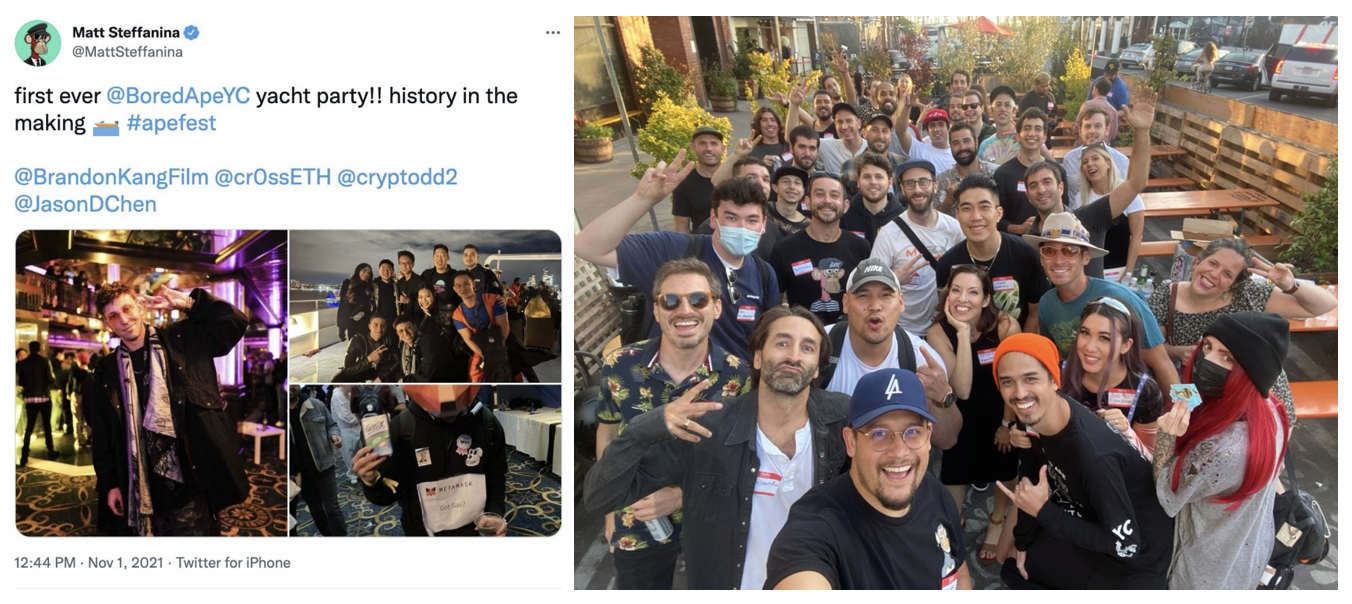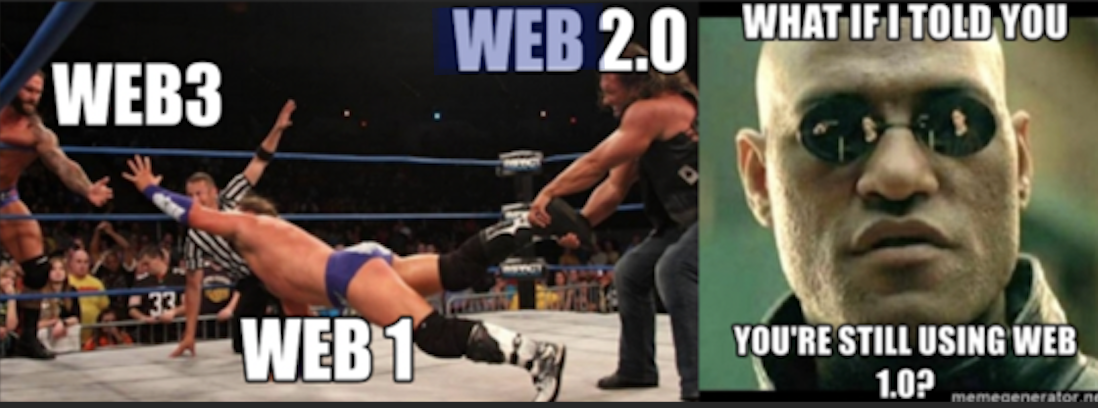Web3 must be the social butterfly’s worst nightmare. And undoubtedly also the marketer’s. For many years now, brands have struggled to keep their head in the social media marketing game. The better and more successful ones have kept themselves ahead of trends, controversies and legislations, driving content, conversations and conventions. The rest of the world followed. But web3 seems to be one of those digital black swan events that threaten to wipe the slate clean, and level the playing field for all, incl. when it comes to social media.
With the dawn of web3, how we socialise with one another on digital platforms will change. How brands and customers converse with each other will also change. What’s the social media marketer then to do? What are the opportunities and pitfalls that lie in wait?
Ready? (Web) 1, 2, 3 Go!
Web3 (aka Web 3 aka Web 3.0) is the latest incarnation of the www as we know it. Here’s a quick primer on the evolution of web1 to web3, and what each age means. I’ve had the privilege to live through all 3 ages. Does that make me an authority on this? Hardly. Remember when web2 first started and marketers were abuzz with theories and debates on this thing called “new media” at seminars and conferences? I do. I’ve attended a few. At one particular conference, a moderator had asked her panel comprising media strategists and marketing experts, “Do you think social media is here to stay?” Every one on the panel was quick to beam a smile and said, “Yes”. I offered a “Uhhhh….No.”
That was 15 years ago. And how I’ve since been proven wrong…-ish. The social media scene had indeed blossomed. Many platforms have flourished and spawned babies and imitators; but with just as many closing shop as quickly as they had arrived (remember Vine? Adios Tumblr!). The world has indeed become more connected; but in many ways it has also become more disconnected. Pop culture is filled with stories of personalities who have profited off social media; with just as many going on a prolonged social media cleanse. (“I will miss you, Tom Holland!”)
I myself have enjoyed social media; until I didn’t. And there are also plenty of documentation out there about social media toxicity and its correlation with mental health. But we’re not here to debate the pros and cons of social media. We can agree that humans have an innate need to connect. Perhaps the better question now to ask is, Can they still do so in web3?
Social media through the web ages
Those who lived through web1 will remember Netscape and AOL dialup. This has been much parodied by young punks today.
But those who witnessed the dawn of web1 can recall the anticipation whenever they heard the “PEEE-KKKR-SSSHHH” sound, because on the other end of that cacophony lay the world. There were people publishing poems, stories and movie quotes. AOL chat opened my eyes (and conversations) with complete strangers, and we bonded over the genius of Tim Roth. We didn’t call it social media then but it was already social in 1995. Web1 was about discovering there’s a whole universe out there bigger than ourselves. And across the digital chasm were strangers we could be friends with…even though it all sounded a tad predatory (because of the anonymity).
Then came web2. Social media platforms like Facebook, Twitter, Instagram, Snapchat and TikTok have made publishers and creators of everyone. It started as “digital media” and “new media”, before finding its groove as “social media”, which stuck. Social media in web2 is a creator’s economy, and the narcissist’s playground. In this era, the world feels closer than before. It feels peer-to-peer. But is it really though? Unbeknownst to us, we thought we were so smart, putting our lives on parade and our thoughts and our IP for the world to see. But we were owned. So owned. Web2 companies tell us what to see, who to see, when to see. But at least the predators now have a name.
So whereas web1 was all about access and conversations, web2 ushered in an era of creating and sharing. And then the problems arose. In an atmosphere thick with issues surrounding data privacy, and content and information ownership, the arrival of web3 seemed almost messianic. It promises control and true peer-to-peer. Web3 is about ownership and transactions.
Social media in the age of web3
Web3 is not a single website that you can use, but a network of hundreds of communities, each of which owns a copy of the code. It brings people with common interests together and facilitates economic transactions. These transactions happen on the blockchain and are typically governed by smart contracts and governance tokens.

The term blockchain itself sounds very social, doesn’t it? It is behind this conceit that web3, leveraging blockchain technology, seems to bring people even closer together by cutting out the middleperson. You own what you create without centralised platforms and intermediaries. You determine who accesses your data, and need not enter into Faustian bargains with tech giants for use of their technology and platforms.
In the age of web3, decentralisation is the word. We’re talking digital autonomous communities and Decentralised Autonomous Organisations (DAOs). What are DAOs used for? For one, they run many of today’s emerging metaverse projects. We’re talking also about organic, self-sovereign communities that can possibly be impervious to government intervention and overreach. Power within a community is redistributed to its members: You and your peers can vote on proposals and decisions pertaining to the community platform or app’s operation. Techno optimists are already predicting web3 will usher in not only Internet democracy but possibly also an offline one. Everything is peer-based. How social(ist) does that sound?
The issue with web3 and its implications on social media
It follows that watchdogs are asking whether web3 will be less a technologist’s utopia but more a libertarian socialist’s one. At which point, you may be wondering, Wait, how did we get from enjoying social media to being labelled a socialist if we want to enjoy web3? What are the new rules of engagement now? Indeed, web3 is not without its issues. Here are 4 that will impact how we approach web3 through the lens of social media.
Issue #1: The perils of anonymity and digital identity
One of the more attractive things about web3 is that it lets people choose what they want to reveal about themselves. Whereas web2 is characterised by irresponsible data sharing and exploitation for commercial gain, web3 empowers the user with ownership and control over their own data. This is possible thanks to self-sovereign identity (SSI), which centres the control of information around the user and removes the need to store personal information entirely on a central database.
Besides controlling access, users of web3 can also control how they look online, particularly on the metaverse. Because they are not bound by the laws of physics, they can be anything they want. They can have eternally flaming hair or sport legit Gucci totes, look as human or as alien as they like, or appear as cisgender or as non-binary as they feel. This sort of freedom to create and express is certainly liberating for everyone, and represents a step forward for DEI&A and identity politics. But on the seamier side, it could also mean someone can hide behind anonymity. That which is meant to protect and empower for some, under the wrong hands, can turn predatory to others. The predators, like in web1, has become anonymous. Only this time they’re better dressed.

Issue #2: Data permanence and social curation
Remember how you could erase an ex from your social media feed upon breakup and disavow this person ever existed in web2? Taylor Swift and The Weeknd can do a lot of things, but scrubbing their bae from their IG feed post-breakup is not one of them in web3. Or have you ever followed, say, Lou Bega on Facebook back in the day, and now kinda outgrown the Mambo No. 5? It’s no longer as simple as “Unfollow”, kiddo!
Everything that is registered and stored in your digital wallet or ledger in web3 is there for good. And tampering with any records is impossible. The implication of this is that people are less likely to post random musings and OOTDs in web3. Content will be more calculated than Martha Stewart’s accountant and more manicured than her peach garden. People will likely be on their guard more, and much less likely to engage cuz the stakes are simply much higher now. And those who do, will be putting up much more of a front.
Issue #3: Safety and social paranoia
According to the World Economic Forum, 25% of our population will spend more than an hour a day in the metaverse by 2026. As digital commerce in the metaverse grows in scope and scale—some estimates by up to US$1 trillion in yearly revenues—cyber attacks are expected to escalate in severity and frequency. Already, many have fallen victim to phishing scams using deep fake technology (impersonating brands and avatars), cryptocurrency theft and NFT fraud, not to mention encountering sexual and racial harassment. How many of us have faced momentary sense of paranoia watching popular Youtuber Ryan Trahan tour the metaverse? It was scary, interesting, and wistful all at once.
If web3 governance, like regulatory actions or solutions to combat cyber crimes without compromising people’s privacy are not implemented, one can expect increased paranoia when engaging in commercial and social activities in web3 too.
Issue #4: Accessibility and the social divide
When most think of web3 today, NFTs and the metaverse readily come to mind. Any of those can be communities capable of being turned into a form of social media, online and off. Already we see NFT communities like Bored Ape Yacht Club creating their own soirees in the real world. Nevertheless it’s a community of bored and privileged simians, which is ironic, considering web3 is intended to be a democratic platform but which has become kinda exclusionary.

What about the metaverse? Those who can’t afford souped-up hardware like VR headsets, smart glasses and haptic suits may not be able to get as much out of their experience as those who can. How do these forms of media then become truly social when the degree of engagement are somewhat determined by disposable income and privilege? Are we bringing people closer together? Or pulling them further apart?
So how can we win(g) the web3 social media game
Social media as we currently know it will die. There, I’ve said it (again). Web2 social giants are finding ways to integrate their web2 offerings into web3; we are already seeing some migratory patterns (hello Meta! I see you, Twitter), but it’s likely they will continue to be web2. Meanwhile, web3 companies will learn to include social capabilities into their offerings. Web3 will not replace web2; rather, both webs will continue to co-exist for a while more. Those who prefer to connect with their existing network of friends, kins, colleagues and acquaintances on existing platforms can continue to do so on web2. Those who venture into web3 will likely build new networks not based on who they know, but what they like. Well, kinda like web1! (Isn’t that the cosmic joke.)

So how then do you create community in web3 and turn this new new media into social opportunity? Does community mean much when it’s all about transactions? Here are some tips on how to win(g) the web3 social media game.
Tip #1: Provide value
Things feel less transactional when it’s about value. This should be easy for seasoned marketers. Offer solutions to problems and challenges (large and small) and conserve the customer’s limited resources (time, money, psychological and physical capacity). Enable feelings of empowerment, security, safety and confidence. Enrich them with inspiration, pride, connectedness and validation. Give them something worth stepping out of their protected shell for, something worth engaging with. Not with your products, but with experiences and stories. Because stories have unifying power and bring people closer together. They let your brand shine.
Tip #2: Be interest-driven
This is how people will discover you in this radical new frontier. Because of its decentralised nature, web3 will see people with common interests band together in the form of “moving castles”. Make sure to create, import and arrange composable parts (such as avatars, props and environments) together as a coherent whole while making these parts available for others to reuse and adapt when building your web3 community. Web3 is an open platform and communities are organic, after all. Aim for interoperability. This gives you the chance to interact with other communities as well. Communicate with, play with, and share knowledge and skills with other communities and help them become moving castles themselves with their own lore, ecosystems, economies and social currencies. Before you know it, they can tell stories about you, with you.
Tip #3: Be inclusive
Expensive bells and whistles like haptic suits are great, but accessibility and customer love are even better. Be an ethical brand that provides equal access to all. Continue to practice DEI&A. Endeavour to put in guardrails to safeguard user privacy while protecting them from predatory actions. It will be more critical than ever to maintain empathy for audiences. All audiences.
Tip #4: Support with offline
Omnichannel is still very much a thing in web2, and will continue to be so in web3. Extending your reach, engagement and visibility into offline channels can help drive visibility to your web3 efforts and will still be the secret sauce to building a strong brand overall. It’s no surprise why you’re still seeing the word “hybrid” bandied around a lot.
Tip #5: Don’t quit web2 just yet
Duh. But also, keep an eye on how “SocialFi” (social media on the blockchain) platforms like Chingari, Phaver and Steemit are developing. These haven’t quite caught on yet, as web3 is still in its infancy and people are still getting their bearings. So who knows whether one of them will become the next Signal. If they can crack the technobabble and get users to see value instead of transactions, that is.
So what’s the future of social media in web3
Social media in web3 will be a more disaggregated and decentralised ecosystem of micro-communities, all powered by independent tokens and blockchain, NFTs and FTs. In this new wild wild west of www, transactions may rule the roost. But isn’t every conversation and exchange and get together we have online and off a transaction anyway? A transaction of time, friendship and affection. It’s just that now people are putting a financial value to it. But if you go by the aphorism “time is money”, it just makes us a lot more intentional about how and where and with whom we spend our time on web3.
Come to think of it also, doesn’t words and concepts like “open frontiers”, “moving tribes”, “the search for belonging and companionship”, “trading and bartering”, “socialism”, “lawlessnes”, sound a lot like the world of our ancestral cavepeople? As they say, the more things change, the more they stay the same…ish. It’s just that this time, we’re all better manicured and wield much much fancier tools.






